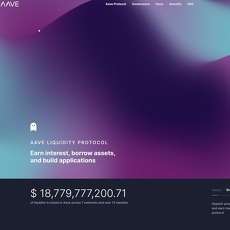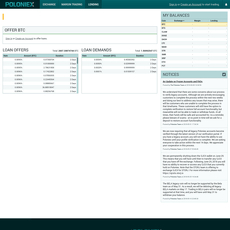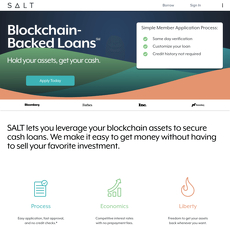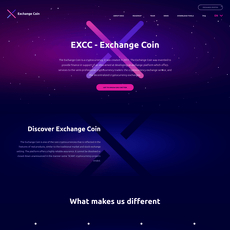Compound Review
Compound
compound.finance
Compound Review Guide: Everything You Need To Know (2025)
Ever wished you could just effortlessly earn passive income from crypto assets sitting idly in your digital wallet? Or maybe you wondered, "Is there a way I could borrow cryptocurrency without dealing with traditional banks or credit scores?" If these thoughts sound familiar, you're in the right place.
Compound claims to offer exactly this—a decentralized lending and borrowing solution providing attractive yield opportunities and simple, instant access to loans using your crypto assets. But is it really as good, secure, and user-friendly as it claims? Can Compound really replace the frustrating experience of traditional finance? Before we jump deeper into what Compound actually does and how it works, let's quickly see something every crypto investor should recognize:
The Challenges Many Crypto Investors Face
Entering crypto lending platforms can feel intimidating. Even experienced crypto investors face concerns and frustrations, such as:
- Losing money - Security breaches, smart contract exploits, or a small mistake that can take away substantial funds instantly.
- Hidden fees or high transaction costs - Gas fees that eat a significant chunk of your earnings, leaving you unhappy and annoyed every time.
- Confusing experience - Overcomplicated user interfaces with complex terms, ratios, and technical details that you simply don’t have the energy or patience to learn.
- Lack of transparency and hidden risks - It seems sometimes that platforms intentionally complicate risks which can lead you into problems you didn't foresee.
I’ve seen more cases than I’d like to mention of investors attempting to lend or borrow crypto assets and getting tangled up in overly complicated DeFi platforms. The result? Either time wasted, lost funds, or even missing out on solid profit opportunities simply because the processes seemed overwhelming or risky.
Don't Worry, There's a Better Way!
If these headaches sound familiar or make you rethink crypto lending altogether, hold on—Compound might actually change your opinion and your crypto-life for good. In this thorough Compound Finance review, I'll show you clearly and honestly how Compound stands apart.
I'll walk you step-by-step through exactly how it works, assess its security and ease-of-use, guide you on borrowing crypto seamlessly, and ultimately answer the burning question…is Compound really worth your valuable time and trust?
So, let's start by clearly understanding Compound at its core. Shall we?
Understanding Compound and How It Actually Works
If you're like me, you're always looking for a smart way to put your crypto to work. Compound is one of those platforms you probably heard mentioned a thousand times on crypto Twitter or Reddit threads. But honestly, what exactly is it, and why does everyone talk so highly about it?
What Exactly is Compound?
Here's the simplest breakdown—Compound Finance is a decentralized lending and borrowing protocol built on Ethereum. Think of it like a fully automated digital bank, but one that's free of traditional paperwork, credit scores, and intermediaries.
"Decentralized finance (DeFi) isn't just the future—it's already transforming how millions manage their money." — Andreessen Horowitz Crypto Report.
On Compound, you can easily and securely lend your idle cryptocurrency holdings to borrowers, instantly earning attractive interest rates. Or if you need liquidity quickly, you can borrow crypto assets, hassle-free, provided you have proper collateral. No paperwork, credit checks, or bank approvals—just you and your crypto.
How Compound Finance Works (Simplified)
If that still sounds complicated, let me explain it even simpler—when adding your crypto funds like ETH, USDC, or DAI to Compound, you're essentially placing them in lending pools. Borrowers can then borrow these asset pools, paying you interest in return. The cool part is this is all done automatically by Ethereum-based smart contracts—open, transparent, and reliable.
The real beauty happens the moment you deposit your crypto: you're issued a unique digital token called a "cToken." For example, if you deposit Ethereum (ETH), you'll receive "cETH." These cTokens represent your initial deposit plus the interest you'll earn. Imagine buying a bond in traditional finance, except in Compound, you automatically gain interest by simply holding your cTokens. To redeem your deposit and earnings, just exchange the cTokens back on the platform whenever you need.
- Real Example: Suppose I deposit 1 ETH at Compound, and receive about 50 cETH (this rate can change). If the interest rate rises or someone borrows ETH from the pool, the value of my cETH increases over time. Later, I can return these cETH to retrieve more ETH than my initial amount—a neat and transparent way to grow my crypto while I'm sleeping.
COMP Token Explained
You might have heard about COMP token as part of the Compound ecosystem. But why does it matter? Simply put, COMP is the native governance token of the Compound protocol. Holding COMP gives you a democratic say in how Compound runs and evolves. As a COMP holder, you can:
- Propose and vote on new developments or changes.
- Influence the platform’s interest rate models and collateral decisions.
- Have a voice regarding protocol fees, rewards, and security upgrades.
Basically, COMP holders aren't merely passive speculators—they become active participants shaping Compound's future. This concept of decentralized community governance is a cornerstone of many successful DeFi projects.
By now, you're probably intrigued, but let's face it—no matter how innovative it seems, we want our investments to be secure, right? You may be wondering, "Exactly how safe is Compound, and has it been battle-tested?" Keep reading, because the answer is coming right up...
Is Compound Really Safe?
Security in crypto isn't just another checkbox on your feature wishlist—it's everything. You've worked hard for your crypto assets, so you need absolute confidence that the platform you're using respects that by placing safety first. Compound talks a big game about security, but does it truly deliver? Let's unpack this carefully.
Smart Contract Audits: Where It All Starts
You’ve probably heard about devastating crypto hacks costing millions due to smart contract vulnerabilities. Fortunately, Compound understands how critical thorough auditing is. They've actively engaged some of the industry's best cybersecurity firms, including trailblazers like Trail of Bits and OpenZeppelin, to regularly test and audit their smart contracts.
These rigorous audits involve meticulous code reviews to identify even the smallest vulnerabilities, errors, or loopholes, significantly reducing the likelihood of exploitation. Clearly, Compound Finance takes no chances when it comes to securing your crypto holdings.
Security is mostly a superstition. Life is either a daring adventure, or nothing. — Helen Keller
But in the crypto world, we can't afford adventures that drain our wallets—and smart contract audits are Compound’s solid barrier against those unwanted adventures.
Additional Protection Layers and Risk Management: Extra Peace of Mind
Apart from audits, Compound isn’t taking its foot off the gas pedal—they've added extra protection layers you're most likely unaware of:
- Bug Bounty Programs: Compound encourages independent security experts from around the globe to detect flaws, openly rewarding white-hat hackers who pinpoint potential threats. This crowdsourced vigilance means threats can be spotted and fixed rapidly.
- Transparency Practices: All Compound contracts and platform changes are completely open-source, so transparency isn’t just lip-service. You can gauge their accountability firsthand anytime.
- Insurance Coverage (Through Nexus Mutual & Opyn): Optional protocol insurance products for Compound are offered via external services like Nexus Mutual and Opyn, letting you cover your crypto deposits against unfavorable “what if” scenarios like smart-contract vulnerabilities.
If that's not comforting enough, Compound operates a clearly-detailed reserve system to help manage unexpected shortfalls or exploits. They've genuinely put in extra measures to protect your crypto.
Past Incidents & Track Record: Let's Talk Reality
Now let’s be honest—has Compound faced any incidents? The truthful answer: yes, although rare. In October 2021, Compound made headlines due to a smart-contract code update error causing COMP tokens to be mistakenly sent out. Around $90 million worth of COMP tokens were incorrectly distributed to users.
Yet here’s where things impress: Compound responded swiftly, openly admitting the mistake and actively working with both developers and the community to attempt recovery. Transparency prevailed—no hidden agendas or shady silence. This incident illustrates that even reliable protocols can occasionally encounter hurdles, but how they respond defines whether users should trust them again.
Considering their honest response, diligent communication, and immediate fixes, Compound proved worthy. Realistically, no DeFi platform is ever completely devoid of some security risks—but Compound continuously shows a transparent and proactive stance.
Still, as responsible crypto investors, we can't simply rely on reputation alone; we must always stay cautious and assess the risks personally.
Feeling secure with Compound is undeniably reassuring, but what exactly is involved when you consider borrowing crypto through Compound itself? Curious how simple (or complicated) borrowing really is on Compound? If that sounds intriguing to you, the answer awaits right beneath. Let's get into the next part together!
How Easy is it to Borrow From Compound?
Imagine needing quick capital to seize a fantastic crypto market opportunity. You anticipate a bullish run on ETH, but your assets are mostly tied up. The solution? Decentralized borrowing. But does Compound actually make this easier, or is it another technical nightmare waiting to drain your time and mental energy?
"Simplicity is the ultimate sophistication." – Leonardo da Vinci
Compound has smartly embraced simplicity, allowing even crypto newcomers to effortlessly borrow digital assets. I've tried it firsthand, and I'd love to show you step-by-step exactly how easy it can be.
Step-by-Step Guide to Borrowing From Compound (with Real Examples)
Want to get started right now? Just follow these straightforward steps:
- Connect Your Crypto Wallet: Visit the official Compound website, click "Connect Wallet," and choose a wallet like MetaMask. Confirm the connection prompt to securely link assets.
- Deposit Collateral: Choose an asset you already hold—for example, ETH or DAI—and deposit it into your wallet on Compound. Say you have 10 ETH—you send it effortlessly to Compound's smart contract pool with a couple of clicks. Once deposited, the assets serve as collateral automatically.
- Check Your Borrowing Limit: Compound clearly shows your current borrowing capacity based on your collateral. For example, if you deposit ETH valued at $20,000, Compound might let you borrow up to around $15,000 depending on the particular asset.
- Select Assets to Borrow: Suppose you'd like to borrow USDC. Choose your desired crypto from their clear list of accessible tokens and enter how much you want. You'll see your current borrowing balance, fees, and interest rate at a glance.
- Execute & Confirm the Transaction: After reviewing the details, confirm the transaction in your wallet. Within seconds, borrowed tokens arrive directly into your wallet.
No lengthy paperwork, no hassling with banks—it's simple, transparent, and quick.
The Hidden Risks - Liquidation Explained Clearly
Borrowing crypto comes with exciting opportunities but also some genuine risks. Understanding liquidation is essential.
Let's simplify liquidation risk realistically:
- Borrowing Ratio: Each asset on Compound has a specific 'collateral factor'—usually between 50% to 80%. So, depositing $100 of ETH with an 75% collateral factor lets you borrow up to $75 worth of another asset.
- Market Fluctuations & Liquidation: Here comes the critical risk! If your collateral value declines—ETH price dropping substantially, for example—and your borrowed amount remains unchanged, your collateral's value could get dangerously close to your loan balance.
- Liquidation Threshold: If your collateral value drops below Compound's pre-set limit, your assets can be automatically liquidated to repay your loan. Ouch—that hurts!
Here's a quick tip: Keep your borrowing modest and always maintain sufficient collateral. Regularly monitor your loan position—Compound provides clear visual loan health indicators to alert whenever there's danger ahead.
Supported Crypto Assets & Borrowing Flexibility
Currently, Compound supports several popular cryptocurrency assets, providing ample flexibility as collateral or for borrowing:
- Ethereum (ETH)
- USD Coin (USDC)
- Wrapped Bitcoin (WBTC)
- Dai (DAI)
- Chainlink (LINK)
- Maker (MKR)
- And other select ERC-20 tokens...
This broad asset support gives you versatility. Want to generate yield on your ETH holdings by borrowing stablecoins to invest elsewhere? Easy. Need some quick liquidity without selling your holdings? Compound has your back.
But, even after learning how Compound makes borrowing user-friendly, one vital consideration remains unanswered:
Is investing directly into Compound's native COMP token worth your attention? Will holding COMP potentially outperform simply lending or borrowing assets? Let's unlock that investing mystery next...
Is Compound Crypto (COMP) a Good Investment?
Let's be real: deciding whether the COMP token itself is worth buying can feel overwhelming. Just because a platform is cool doesn't automatically mean its token will skyrocket in value. So, let's take a closer, honest look at what COMP has offered so far and what's in store, backed by real-world indicators and expert opinions.
Performance Review of Compound Token (COMP)
The COMP token caught the DeFi wave early. After launching back in June 2020, COMP initially skyrocketed from around $60 to almost $330 in just a few days. Pretty impressive, right? But that's not the full story—like most crypto, COMP went on its rollercoaster ride: climbing to an all-time high of nearly $911 in May 2021 before finding stability at lower levels for most of 2022 and 2023.
What does this mean for you?
- Despite the volatility, early adopters who timed their entries wisely saw major gains, emphasizing COMP's potential for substantial short-term moves.
- However, COMP prices have remained relatively subdued in recent months, offering potentially attractive entry points if you're considering long-term plays. Always check current market conditions carefully before entering.
COMP Token Utility and Value
So, why exactly would someone own COMP besides hoping for price appreciation? Good news here: the COMP token isn't just another crypto asset—it provides tangible value:
- Governance power: Holding COMP means having a direct say in platform decisions, proposals, and community-driven upgrades. Compound embraces decentralization fully, putting the power of future developments into COMP holders' hands.
- Potential passive income through staking: COMP holders have opportunities to participate in liquidity provision and earn yield rewards. While rewards aren't as high compared to some riskier platforms, Compound brings trustworthiness and lower risk compromise into staking.
- Limited supply creates scarcity: Only around 10 million COMP tokens will ever exist, making the supply finite and potentially increasing token value as more people join or invest in Compound.
"An investment in knowledge always pays the best interest." – Benjamin Franklin
That quote rings especially true in crypto investing. By fully understanding what COMP tokens offer beyond mere numbers on a chart, you empower yourself to make smarter, confidence-driven investment decisions.
Expert Opinions and Future Projections
So, what do seasoned industry analysts think about COMP's future? Most crypto market analysts highlight Compound's consistent position as a major player in DeFi. For instance:
- CoinDesk’s recent analysis describes Compound as a "blue-chip DeFi platform," emphasizing trustworthiness and long-term reliability.
- Glassnode data analytics have shown steady COMP accumulation trends by long-term crypto whales, indicating strategic positioning from experienced investors.
- Community sentiment: Crypto Twitter discussions regularly denote optimism towards Compound's ability to innovate DeFi lending sustainably, which increases general faith in COMP's longevity.
Yet remember, crypto isn't an exact science. It’s essential to balance optimism with cautious research.
Are you curious if Compound is truly better overall compared to other platforms? Stick around as we look closer at the distinct advantages—and hidden drawbacks—Compound brings to the table next. This insight could be the difference between an average crypto investing experience and an excellent one.
Pros and Cons of Using Compound Finance
Alright, let's be completely upfront here, because no one likes unpleasant surprises. While Compound Finance comes with some major perks, there are also a couple of catches you should know about. I'll lay them all out clearly to help you make an informed decision—so let's start with the good stuff!
Major Advantages of Compound Finance
- Secure and Credible Platform: First things first, Compound's smart contracts are audited repeatedly by some heavyweight security experts, such as OpenZeppelin and Trail of Bits. They've also got a robust bug bounty program. In simple terms: security is taken seriously.
- Transparent Interest Rates: Compound clearly shows you exactly how much you'll earn or pay, automatically calculated by supply and demand dynamics. No fuzzy numbers or hidden fine print like you sometimes find in traditional lending.
- No-Bureaucracy Loans: Ever tried getting a traditional loan with your local bank, filling out mountains of paperwork and waiting for days? It can be a grind! Compound skips all that. Your crypto assets serve as instant collateral—no lengthy credit checks or forms required.
- Passive Income Potential: Let's face it, we all love passive income streams. Compound allows your cryptocurrencies to earn interest immediately once deposited. Imagine your ETH or stablecoins earning overnight even while you sleep. How great does that sound?
- A Proven Team and Project: Compound isn't some anonymous flash-in-the-pan project. Its team includes experienced engineers and advisors from reputable companies like Coinbase, enhancing confidence in the ecosystem and future stability.
But every coin has two sides, and I'd be doing you a disservice if I didn't also discuss the challenges.
Possible Downsides and Limitations You Should Consider
- Smart Contract Risks (They're Real!): Although audits greatly reduce risk, let's be clear—no tech is 100% foolproof. DeFi has faced incidents before (remember the Poly Network hack?). Compound itself faced a glitch in October 2021 due to a faulty programming update, mistakenly paying out millions to users. So never assume perfection; smart contracts have vulnerabilities, period.
- Collateral Volatility: Crypto markets swing fast, and if your collateral value suddenly plummets below Compound's liquidation threshold, your assets could be partly liquidated. Crypto volatility is no joke, especially during market dips and flash crashes, so stay mindful and keep extra padding to avoid getting caught off guard.
- Ethereum Gas Fee Pain: Let's face facts, Ethereum gas fees can sometimes burn your wallet if network congestion hits. Conducting small transactions on Compound may not always be economically viable unless ETH layer-two solutions significantly improve matters (we are all hoping here!).
- Complexity for Newbies: While Compound is user-friendly compared to older DeFi platforms, it's not always beginner-proof. Terms like "collateral ratio," "liquidation threshold," and navigating MetaMask wallets might still intimidate crypto newcomers initially. A bit of patience and study might be needed, at least at first.
"Risk comes from not knowing what you're doing." – Warren Buffett
To sum it up, Compound's offering is pretty compelling, but as Buffett puts it, we need to know exactly what we're doing. Its strengths attract thousands of users every month, but the limitations are also real factors to weigh carefully before you jump in with both feet.
Considering these points, how does Compound stack up against its biggest competitors like Aave or MakerDAO? Is Compound truly superior?
Hang tight—because what I'm about to share next may surprise you, helping you clearly see the big picture in choosing your winning DeFi lending platform. Ready?
How Compound Stacks Up Against Competitors
You might have asked yourself: "Is Compound truly the best option, or should I look into other DeFi lending platforms like Aave or MakerDAO?" Trust me, that's a smart question. After all, choosing the right lending and borrowing platform can directly impact your earning potential, safety, and ease of use. So let's compare Compound head-to-head with these top competitors and make this decision a bit easier.
Quick Comparison to Top DeFi Lending Platforms
Let's quickly compare Compound with two big contenders in the DeFi lending space: Aave and MakerDAO.
- Ease of Use: Compound is quite straightforward and beginner-friendly. Aave also scores high marks here, providing detailed interfaces and support. MakerDAO, while very powerful, tends to be more technical, potentially confusing newer users.
- Safety Track Record: All three have had extensive security audits. However, Aave and Compound specifically have reassuring track records, having undergone multiple highly reputable audits (such as OpenZeppelin) and maintained strong community confidence. MakerDAO, too, has a solid governance model, although past market volatility has slightly dented its reputation.
- Fee Structures: Both Compound and Aave share very similar fee structures, often affected by Ethereum network congestion. MakerDAO, primarily known for minting and managing stablecoin DAI, has distinct stability fees which can sometimes make borrowing more complex.
- Supported Cryptocurrencies: Compound supports popular assets like ETH, USDC, DAI, BAT, and several others, mirroring Aave’s extensive asset support. MakerDAO is focused more narrowly around Ethereum-based collateral specifically aimed toward minting or managing DAI stablecoin.
"In decentralized finance, clarity and simplicity often decide who thrives and who merely survives." – Vitalik Buterin
That's a powerful thought that should resonate especially if you're considering your first moves into DeFi lending. Compound's simplicity often gives it a genuine advantage when you're just starting out, especially compared to more complicated platforms like MakerDAO.
Unique Advantages of Compound
So, what truly makes Compound unique compared to its rivals?
- Immediate Interest Earnings: One impressive feature is how Compound issues cTokens instantly when you deposit your crypto. These tokens instantly start generating interest—no waiting or complicated setup involved.
- Transparency and Community Confidence: Compound publicly shows all interest rates and loan terms transparently. You know exactly what's happening with your assets, inspiring trust and confidence.
- Strong Liquidity Pools: Compound has grown to become one of Ethereum’s top liquidity protocols. According to a recent DeFi Pulse report, Compound consistently remains in the top 5 DeFi protocols by total value locked (TVL), demonstrating the community's faith in its protocol reliability.
- User Governance with COMP token: Unlike many centralized services, Compound lets token holders actively shape the platform's future through decentralized governance. In a market that strongly values decentralized decision-making, this advantage is significant.
You've seen now how Compound holds up against other major DeFi platforms. But surely there's more you'd need to consider in making your decision, right? Perhaps additional resources or some specialized tools that help you further understand Compound and boost your success?
Stay tuned—I’ll share exactly those kind of helpful resources next, so you can fully maximize your Compound journey. Curious? Let's check them out together.
Helpful Resources to Maximize Your Success With Compound
Let's get real for a second—navigating the DeFi space isn't always smooth sailing. Compound is no exception. Even seasoned crypto investors rely on solid tools to stay ahead. I believe having the right resources is half the battle. So, here's a list of my personal favorite, reliable, and genuinely helpful tools and websites you should absolutely bookmark to maximize your Compound journey:
- Compound Official Website: It might seem obvious, but you'd be surprised how many people skip this step. Their website has clear documentation, real-time rates, and strategic resources you won’t find elsewhere.
- DeFi Llama: One of my go-tos when it comes to tracking total value locked (TVL), market comparisons, and detailed analytics. It helps you identify trends and gives a snapshot of how Compound stacks up against competitors.
- Dune Analytics: A powerful analytics platform offering detailed dashboards specifically dedicated to Compound data, including borrowing and lending trends, interest rates, and insightful charts made by community users.
- Compound's Official Medium Blog: The Compound team regularly publishes product updates, announcements, and thoughtful insights directly from the leaders behind the protocol.
- Etherscan.io: As Compound operates on Ethereum, Etherscan is your go-to block explorer for reviewing transactions, checking your assets, and confirming deposits or withdrawal statuses—always useful to have handy.
- OpenZeppelin Audits and Trail of Bits Reports: Security is critical. I recommend reviewing audits professionally done by these reputable firms to feel confident that Compound’s smart contracts are reliable.
- Crypto Fees: Ethereum handles all Compound transactions—yes, it's notorious for occasionally high fees. This site offers an easy way to check real-time gas fees, so you're never caught off guard.
- Compound Governance Forum: Understanding the community perspective is essential, especially if you're investing in COMP tokens. This is where users openly share opinions, proposals, and ideas about the future developments of Compound.
Equipping yourself with solid, trustworthy resources can significantly boost your success and reduce frustration when dealing with Compound. But what's next for you? Keep reading because I'm about to answer all your critical questions and wrap everything up clearly—still wondering if Compound is truly worth your crypto investment? Let's settle that now!
Compound Finance FAQ & Final Thoughts
Before we wrap things up, let's quickly answer the most frequently asked questions about Compound Finance. I've spoken with countless crypto enthusiasts, and these seem to cover most of their concerns:
Frequently Asked Questions About Compound
- How does Compound Finance work?
Compound lets you earn passive income by depositing your crypto assets into decentralized lending pools, or borrow crypto instantly by providing collateral. When you deposit assets, you receive cTokens representing your share and earned interest. - How safe is Compound Finance?
Compound uses smart contracts audited regularly by top security firms like OpenZeppelin and Trail of Bits. Additionally, they offer bug bounty rewards and implement transparent risk management practices. While no platform is without risks, Compound boasts a reliable track record overall. - How to borrow from Compound Finance?
Borrowing is straightforward: connect your crypto wallet, deposit accepted assets as collateral, verify your borrowing limits clearly shown on your dashboard, and then borrow your desired crypto asset. Just be careful about managing your borrowing ratio to avoid liquidation if the collateral asset drops in value. - Is Compound crypto (COMP) a good investment?
COMP tokens have utility through governance participation, allowing holders to influence platform decisions. Historically, COMP has shown considerable volatility but has attracted support within the crypto community for its important DeFi role. Experts often suggest COMP for those bullish on decentralized lending growth, but remember it remains speculative, especially in volatile market conditions.
Should You Try Compound?
Now, let’s tackle the big question—should you actually give Compound a shot?
If you're looking for a convenient, straightforward way to earn interest on your crypto holdings without dealing with conventional paperwork hassles, Compound could be an awesome choice. It's especially attractive if you're passionate about decentralization and want more control over your assets.
On top of simplicity, Compound offers competitive yield rates compared to traditional savings accounts or even centralised crypto lending platforms. Plus, unlike many centralized options that require identity verification and involve lengthy processes, Compound keeps things refreshingly simple.
However, keep in mind that there are a few risks associated with all decentralized crypto lending protocols. Crypto markets can get volatile—we've all seen this happen—and collateral can potentially lose value, leading to liquidations. Gas fees on the Ethereum network can also fluctuate, sometimes making transactions costly.
Wrapping It Up: Your Next Step With Compound
Ultimately, the decision to use Compound Finance boils down to your personal crypto goals and comfort level with market risks. My recommendation is simple but critical: start small. Experiment first with a modest amount of crypto to get comfortable with Compound’s platform interface, borrowing terms, and asset deposit processes.
As you become more familiar—and if you trust the method and see tangible benefits—consider gradually increasing your exposure. Remember, solid crypto investing strategies always prioritize safety, diversification, and careful portfolio management.
Here's a friendly tip: regularly check reliable resources I've shared earlier, keep an eye on Compound governance decisions (if you hold COMP), and be proactive about security best practices like hardware wallets, secure passwords, and thorough research.
With a mindful approach and careful planning, Compound can absolutely become a valuable tool in your crypto toolkit—opening up exciting possibilities for passive income and hassle-free borrowing.
Ready to test the waters? Head over to the official Compound Finance website, and see first-hand if it aligns with your strategy and ambitions!








